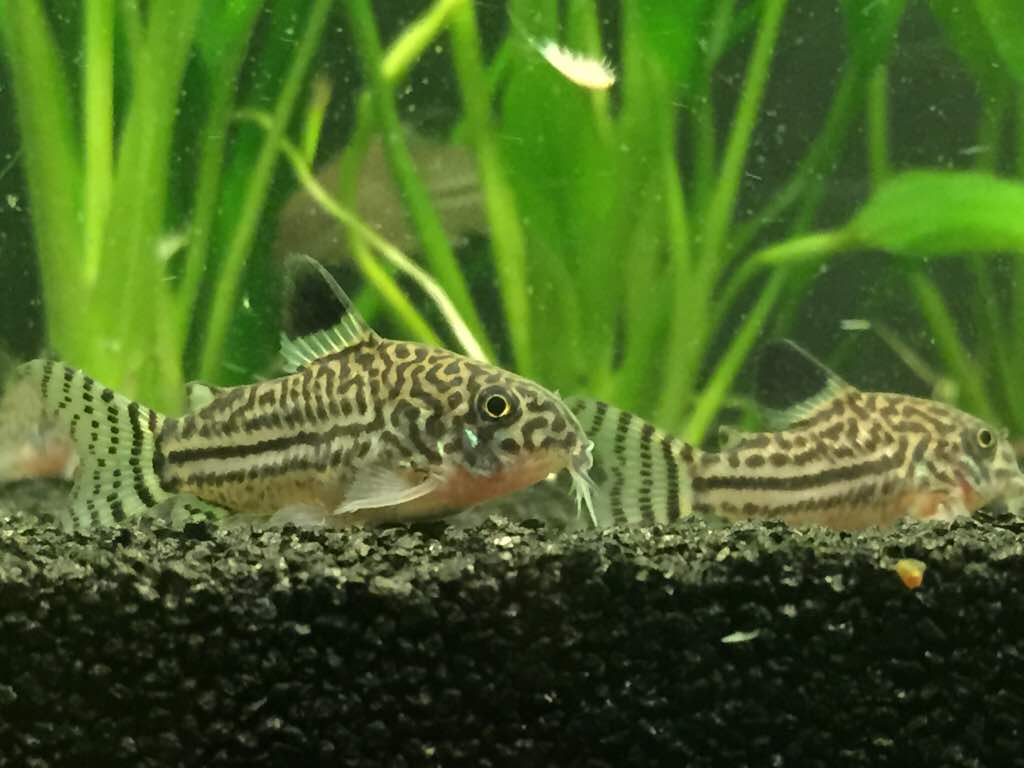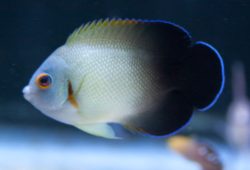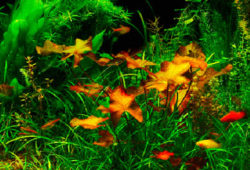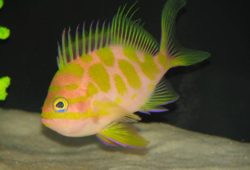Corydoras in the Aquarium
The following article is devoted to Corydoras in the Aquarium. Corydoras are among the best tropical fish for the home aquarium. They are small, they aren’t aggressive toward smaller fish, they are hard for bigger fishes to eat, and they help keep the tank clean by scavenging food off the bottom. Despite rumors to the contrary, they do not eat fish poop and they do require feeding. They prefer to eat food off the bottom so they need to be fed food that sinks.

They will happily eat sinking tablet foods. There are several different types of these which can be found at most pet stores. They also enjoy frozen foods, especially frozen blood worms. Live worm-type foods are eagerly accepted so long as they are small enough for the fish to eat.
Types of Corydoras
There is an astonishing number of Corydoras species. The number of named Corydoras species was 156 in 2006 (Fuller, 2006), with new species being discovered faster than they could be named. These fish originally come from South America, mainly from the great river basins of the Amazon, the Orinoco and the Rio Negro.
The most common Corydoras species in the tropical fish hobby is the Bronze Corydoras, Corydoras aeneus, followed by the Peppered Corydoras, Corydoras paleatus, but there are many are other species available. They range in size from scarcely over an inch in the case of Corydoras hastatus, pygmaeus, and habrosus to approximately 3 inches for Corydoras aeneus and others. Fish that look like Corydoras but are larger are probably in one of the genera Brochis or Schleromystax, both of which are closely related to the genus Corydoras. The common Corydoras are usually between two and three inches in size with Corydoras aeneus being approximately three inches when adult.
With so many species, there are many different color patterns available. Most Corydoras patterns contain contrast in dark and light coloring, or large amounts of gray. Different color patterns will appeal to different people, but the intricate pattern of spots on Corydoras trilineatus makes it one of the most beautiful species.
Corydoras Behaviour
Corydoras school. Almost all species are bottom dwellers and enjoy digging in the gravel. The schools often sit on the bottom or hover and swim just above it. The exceptions are the dwarf species which will often be found schooling in mid-water as well as near the bottom. These smallest corydoras have a slightly different and more streamlined shape when compared to the Bronze Corydoras. The shape of these small Corydoras is probably due to their preference for mid-water swimming where a more streamlined shape is useful.
Corydoras can absorb oxygen from air taken into the gut and for this reason will sometimes dart to the surface for a breath of air and then back down to the bottom. This is normal behavior, but if all your Corydoras are doing this constantly then there may be inadequate dissolved oxygen in your tank.
I have kept Corydoras for many years and I have never seen recognisable aggressive behavior by Corydoras against members of their own species or any other, including towards much smaller individuals that have beaten them to the food, and partially grown fry of other fish species.
Corydoras are egg-depositors and will lay eggs on any available flat surface including the walls of the tank, the tank heater, and tank decorations. Reports on whether they eat their eggs are mixed so you may wish to separate the eggs from the adults.
With their even temperament, myriad species, and comical appearance, Corydoras are much more than just tank scavengers. When given what they need to flourish they are a fascinating and beautiful addition to the tank.



